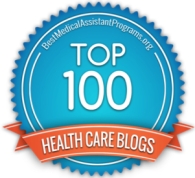Our ninth, and final, winning essay comes from Naomi Thyden of the University of Minnesota School of Public Health:
In a certain mood, it is fun to imagine the pieces that could fall into place to achieve health equity – policies that prioritize people over profits, and true power in the hands of people who have been marginalized. Then I think of women of color I know who have spent their careers dedicated to health equity only to be treated like less than the experts they are, and wonder if that is my future. To make progress toward health equity we must question the ways things have always been done and remember that if nothing changes, nothing changes.
Public education is one example of where we can rethink policies and values. Huge variations in spending on education help create disparities in childhood that last a lifetime. We are so used to this system that when it is time to raise a family, people unabashedly move away from diverse neighborhoods to places with ‘good schools’ without a second thought for the thousands of children who have no choice but to attend a ‘bad school’. Every child is entitled to a high-quality education in a school that treats them with respect, and we are far from that ideal.
We also need decision-making power in the hands of people who understand health disparities. A lifetime of witnessing and experiencing the conditions that create inequities is a qualification and we should treat it as such. When I worked at a public health organization ostensibly dedicated to health equity, I exhausted myself trying to change minds and explain causes of health disparities and still made little progress. Eventually, I turned my energy toward embracing the (limited) power I had, and directed funds to community-based organizations doing health equity work, hired highly qualified applicants of color who had been passed over, and disseminated needed health disparities data. Imagine the strides we could make if people with intimate knowledge of health disparities were unburdened from explaining every step they take.
A challenge for creating health equity is that so many sectors and disciplines are involved. However, it is also an opportunity because every person who is dedicated to the cause, wherever they work and whatever their role, has the power to propel us forward. It is uncomfortable to challenge the beliefs that our policies are based on, but the alternative is continuing to live in a nation where babies die because of the color of their skin or the neighborhood they were born in. We will not solve health disparities in the next decade, but I am inspired by older generations who dragged us forward at great personal cost, and showed us that whether or not we are appreciated, there is work to be done.

